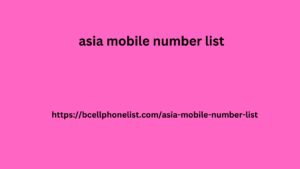First of all, if you want to know what HubSpot CRM is , start here (to be clear, they are the ones who invented inbound marketing ). Then, if you want to make the most of it, you need to know the tools and terminology used, and then read below. Let’s look at HubSpot’s main terms and tools together.
1. Lifecycle Stages
The “Lifecycle Stage” is a predefined property , designed to indicate where contacts are in the acquisition funnel. Each stage represents a transition along the funnel. The stages, starting from the top, are:
Subscriber (Subscriber)
Lead
Marketing Qualified Leads (MQL)
Sales Qualified Lead (SQL)
Opportunity
Customer
Evangelist
Funnel-1
3. Contacts (contacts)
Contacts is an “object” (database) that contains all the people ( prospects, customers, suppliers, etc.) that you need to track. You can store a lot of information for each individual contact (phone numbers, addresses, titles, roles, and more) in their ” properties .”
4. Companies (companies)
Companies are another important object within HubSpot that represent all the organizations (prospects, customers, suppliers, etc.) that you need to track in HubSpot.
5. View (view)
HubSpot can show you specific “ views ” of Contacts , Companies , and Deals based on certain criteria, so you can easily see just the data you need . There are two key elements to creating custom views: filters ( to filter data using any property of that object) and columns , which you can add or remove to refine your view.
6. Lead rotator (Lead rotation)
As your business grows and your sales team grows, manually assigning “leads” to different salespeople becomes complicated to manage and sustain (it becomes difficult to “scale” the business). With HubSpot tools you can automatically assign contacts to your salespeople based on the rules you have set up in the programmable automation system.
7. Lead Status (lead status)
“Lead status” is a predefined property of a contact (or company) that indicates where they are in the purchase funnel. This property allows you to accurately qualify the contact or company as a lead.
8. Deal (offer)
The Deal indicates the value and the probability of closing that sale. When you create the Deals, you build your pipeline , which, by adding all the values, allows you to predict the potential future turnover.
In the area of digital technology, the Australia Mobile Database is crucial. It makes it simple for us to connect with our target audience. We use telephone marketing to target various businesses and individuals in the mobile database. This leads to a rapid accumulation of leads. its business gathers and gives its clients access to Australia asia mobile number list mobile database data. The security of our mobile database is guaranteed. We offer thorough data to support the expansion of your company.
9. Deal Stage (offer stage)
“Deal stages” allow you to categorize and track the progress of deals you’re working on within HubSpot. Each “Deal stage” has an associated job function email data value that indicates the likelihood of closing deals marked with that “Deal stage.”
10. Closed Won/Closed Lost (offer closed, not closed)
When the Deal Stage reaches 100% it means that it has been buy lead successful ( Closed Win ), and the “Lifecycle Stage” of all contacts and companies associated with that Deal will change to ” Customer “.
11. Tasks (activities)
Tasks are actions that need to be completed and can be assigned to yourself or others. By assigning a Task, both you and the assignee will receive an email notification about due dates.
12. Deal Forecast
Deal Forecast is a projection of the amount of revenue that will be generated within a given period of time.
Example of a sales process
1. Where does the contact come from? (Lead Sources)
online (website, social)
event
phone call
networking
various
2. The contact becomes a Lead
Typically a lead is a contact who has filled out a form on your site or attended a conference or event of yours and left their business card.
3. The Lead becomes MQL (Marketing Qualified Lead)
MQLs represent contacts that meet your sales team’s specifications . Your team defines this threshold by assigning “points” to the contact based on the activities they performed: downloaded an ebook, visited the site multiple times, etc.
4. From MQL to SQL (Sales Qualified Lead)
SQLs are contacts that the marketing team has decided need to be followed up by a salesperson directly. “Sales” now has the tough job of managing the contact to turn it into a customer. The task is made easier by the information that marketing will pass on to the salesperson: what content the contact has downloaded, what pages of the site he has read, what he is interested in…
5. From SQL to Opportunity
The sales person, after a series of activities, defines which contacts have a significant percentage of being converted into customers (Customers), and who could therefore purchase a service or product (they must “probe” it and decide whether or not it is qualified for the sale).
6. Finally, the “Customer”
At this point the Deal (the offer) is created : the negotiation phases must be defined, an appointment must be set for the presentation of the estimate and, if the potential client confirms interest, the negotiation can be started to reach an agreement. If the agreement is reached ( Close Win ), after a great deal of teamwork, the contact will finally become a client who will buy our services or products.
7. Finally the Evangelist (or Ambassador)
“Evangelists” are those contacts who become advocates and promoters of your business. They may bring you new business, but they will still be among your best customers. For this reason, having a single platform that manages in an integrated way (and automates) all the activities of the “contact”, from its entry into the sales funnel to its conversion into a customer, is fundamental.
Those who integrate HubSpot into their business processes will never go back: an indispensable tool in contemporary companies, where the completeness and integrity of information , and the speed of execution, have become essential for increasing productivity, even in marketing and sales departments .


